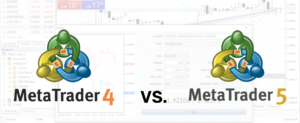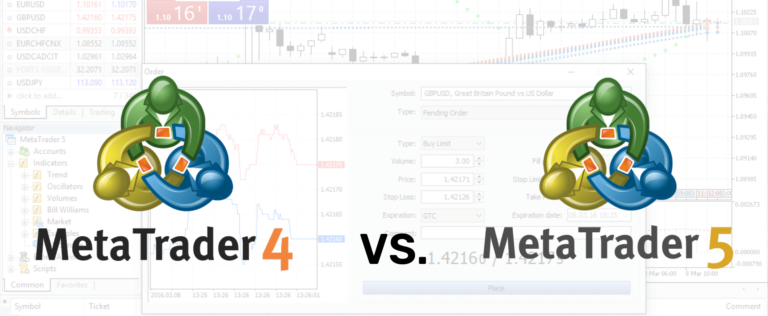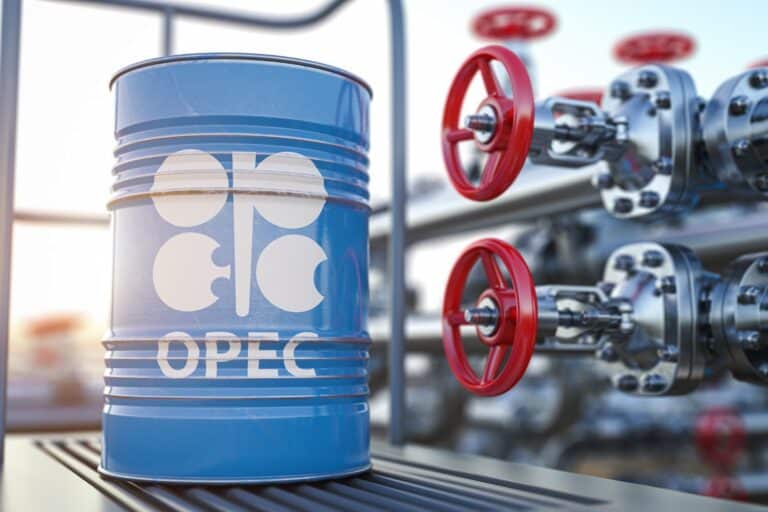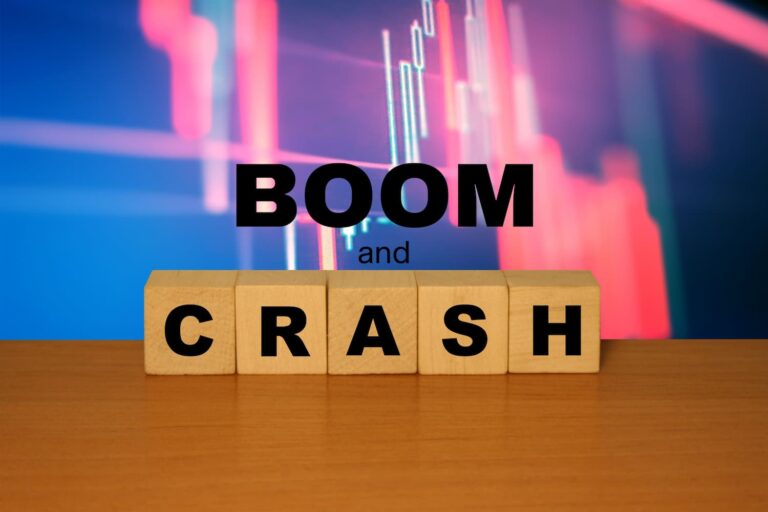Commodities are the cornerstone of the global economy, holding substantial influence not only within various industries but also in everyday life. The combination of volatile price movements, high liquidity and availability of diversification makes commodity trading highly attractive to traders. But commodities are not all the same. Read ahead to discover how commodities are defined and classified and which commodities are the most popular by traded volume.
What are Commodities?
Commodities are standard, tangible goods that are used for production and consumption, two fundamental processes within an economy. These goods include raw materials utilised in manufacturing processes, staples that are grown from agriculture, precious metals that are mined, livestock and more. Commodities can be classified into two broad categories:
Hard commodities: Natural resources that need to be mined or extracted, such as metals and energy resources. Examples are gold, crude oil, natural gas, and silver.
Soft commodities: Livestock and agricultural products like grains, soft fibres, and cattle. Examples include wheat, soybeans, corn, and sugar.
What is Commodity Trading?
Commodity trading in the financial world refers to the buying and selling of commodities as financial instruments on organised exchanges, similar to how FX, stocks or indices are traded.
Commodity trading is popular amongst traders for three reasons:
- Volatility: Commodities are the lifeblood of the economy, and their market prices are driven by real-world forces, such as geopolitics, supply & demand, the commodity supply chain, policy-level decisions and even the weather. All this contributes to significant volatility in commodity prices.
- Liquidity: Much like forex, some commodities are highly liquid, meaning that there are many buyers and sellers trading these commodities at a given time. This degree of volatility can make these commodities more attractive to traders due to the relative ease of entering or exiting a position.
- Trading vehicles: Commodities are most commonly traded as futures – agreements between two parties to buy or sell a specific quantity of an underlying asset at a predetermined price on a specified future date. However, they can also be traded as commodity CFDs (Contracts for Difference) options, ETFs (exchange-traded funds), commodity stocks, forward contracts, or in the spot market.
The Top 9 Commodities by Traded Volume in 2023
Here are the most popular commodities for 2023 by traded volume:
| Commodity name | Symbol | Type | Exchange | Volume (in contracts) |
|---|---|---|---|---|
| WTI crude | CL.1 | Energy | New York Mercantile Exchange | 389,406 |
| Gold | GC.1 | Precious metal | Commodities Exchange Centre | 158,269 |
| Natural gas | NG.1 | Energy | New York Mercantile Exchange | 120,340 |
| Soybean | S.1 | Agriculture | Chicago Board of Trade | 99,978 |
| Corn | C.1 | Agriculture | Chicago Board of Trade | 94,059 |
| Brent crude | LCO.1 | Energy | Intercontinental Exchange Europe | 76,286 |
| Sugar | SB.1 | Agriculture | Intercontinental Exchange US | 73,305 |
| Silver | SI.1 | Precious metal | Commodities Exchange Centre | 60,053 |
| Wheat | W.1 | Agriculture | Chicago Board of Trade | 48,960 |
*Data based on commodity futures tracked by CNBC as of 04/09/2023.
1. WTI Crude Oil
WTI (West Texas Intermediate) crude is a high-quality, light, and sweet crude oil primarily produced in the US. It is one of the most widely recognised and actively traded benchmark crude oils in the world. Its trading volume is driven by its status as a key benchmark for oil prices in North America.
Factors influencing trading volume: The WTI crude oil market is highly sensitive to geopolitical events, supply disruptions, and changes in global demand. Traders closely monitor factors like OPEC (Organization of the Petroleum Exporting Countries) decisions, geopolitical tensions in oil-producing regions, and economic indicators for insights into future price movements.

2. Gold
Gold has long been a favourite among investors and traders, making it one of the most traded precious metals globally. It is wildly popular due to its status as a safe haven asset, which helps to offset risk, and hedge against inflation.
Factors influencing trading volume: Gold’s trading volume is driven by a variety of factors, including economic uncertainty, inflation concerns, and changes in monetary policy decisions.

3. Natural Gas
Natural gas is a vital energy resource with a substantial trading volume. It is the third-biggest source of energy by consumption in the world, after oil and coal. Natural gas is popularly used for heating, electricity generation, and as a feedstock in various industries.
Factors influencing trading volume: Natural gas trading volume is affected by weather patterns, storage levels, production, and global demand. Severe weather events, such as hurricanes, can disrupt supply chains and lead to increased volatility.
4. Soybeans
Soybeans are a crucial agricultural commodity, used both as a feeder ingredient for various food products, as a final product for human consumption, and as animal feed. Soybean trading is a critical component of the global commodities market, with the US, Brazil, and Argentina being the largest producers and exporters of soybeans.
Factors influencing trading volume: Soybean trading volume is influenced by factors such as weather conditions, trade disputes, and changes in livestock production. Trade tensions between major soybean producers and consumers can have a significant impact on prices.
5. Corn
Corn, or maize, is another crop with substantial trading volume. It is one of the most widely cultivated and versatile crops, serving as a staple food source, livestock feed, and raw material for various industrial products such as ethanol.
Factors influencing trading volume: Corn prices are sensitive to factors like weather conditions, government policies, and global demand for biofuels. Ethanol production from corn is a key driver of demand.
6. Brent Crude Oil
Brent crude is a major benchmark for global oil prices and is one of the most widely used references for pricing crude oil worldwide. It is named after the Brent oil field in the North Sea, which is one of the key sources of this type of crude oil. Brent crude serves as a critical indicator for the pricing of various petroleum products.
Factors influencing trading volume: Like WTI, Brent crude oil is influenced by geopolitical events, supply and demand dynamics, and economic factors. It often reflects trends in the European and Asian oil markets.
7. Sugar
Sugar is an essential agricultural commodity that plays a significant role in the global economy. It is a versatile product used extensively in the food and beverage industry, as well as in the production of biofuels and industrial goods.
Factors influencing trading volume: Sugar prices are influenced by factors like weather conditions, government policies, and shifts in consumer preferences for sweeteners. Trade agreements and tariffs can also impact sugar’s trading dynamics.
8. Silver
Silver, often referred to as “poor man’s gold,” is another precious metal with significant trading volume. It holds a unique position in the commodities market due to its dual role as both an industrial metal and a store of value, like gold.
Factors influencing trading volume: Similar to gold, silver’s trading volume is influenced by economic factors and market sentiment. It is used in industrial applications, making it sensitive to changes in manufacturing and technology demand.
9. Wheat
Wheat is a staple agricultural commodity, and its trading volume is substantial due to its widespread global consumption. It is one of the world’s most important staple crops and a fundamental source of food for humans and livestock.
Factors influencing trading volume: Wheat trading is impacted by factors like weather conditions, crop yields, and global food demand. Droughts, floods, and other weather-related events can lead to supply disruptions and price volatility.

How to Trade Commodities
Commodity trading is attractive to traders looking to take advantage of their high volatility by allowing traders to go both long and short on price movements.
Meanwhile, high traded volumes for certain commodities mean increased market liquidity with an abundance of buyers and sellers to trade with.
Moreover, traders can choose to trade different classes of commodities, such as energies, precious metals, and agricultural products, and they can also trade commodities via different vehicles, such as ETFs, CFDs or futures contracts.
Here’s how you can get started with commodity trading:
- Do your research: Familiarise yourself with the different types of commodities and learn about the factors that influence their prices. Use this information to decide which commodity or commodities you want to trade.
- Choose your vehicle: Commodities can be traded on the spot market, as futures or options contracts, via CFDs and more. Select a vehicle that makes the most sense based on the capital you have on hand and your commodity trading objectives.
- Choose your broker: Check with your existing broker for access to the commodities you’re interested in, or open a live account with a reliable broker that does. Ensure the platform provides the necessary research tools, charting, and execution capabilities.
- Develop your trading strategy: Determine your trading goals, risk tolerance, and time horizon, use technical and fundamental analysis to understand price movements, and implement risk management techniques.
- Practice with a demo account: Before trading with real money, use a demo account to practice your trading strategy without risking capital.
- Trade with a live account: Once you have gained confidence in your strategy, fund and trade from your live trading account to make real trades using your capital. Enter buy or sell orders based on your trading strategy and market analysis.
- Manage your trades: Review your open positions closely and periodically, be prepared to adjust your strategy if market conditions change and stay updated on market news and events that can impact commodity prices.
Frequently Asked Questions
Q: What factors drive the volatility in energies like crude oil and natural gas?
A: Geopolitical tensions in major oil-producing regions, supply disruptions (such as hurricanes or conflicts), changes in global demand due to economic conditions, and decisions made by organizations like OPEC can all impact the prices of energies.
Q: Why are precious metals like gold and silver considered safe-haven assets?
A: Precious metals like gold and silver are often considered safe-haven assets because they tend to retain their value during times of economic uncertainty and market turmoil. Traders flock to these metals as a store of value when they seek protection from currency devaluation, inflation, and financial crises. The perception of stability and their track record as hedges against economic instability make them attractive in turbulent times.
Q: How do weather conditions affect agricultural commodities such as wheat, soybeans, and corn?
A: Adverse weather events like droughts, floods, or extreme temperatures can harm crop yields, leading to supply shortages and increased prices. Conversely, ideal weather conditions can result in bumper crops, leading to oversupply and downward pressure on prices. As a result, traders and investors closely monitor weather forecasts and their potential impact on agricultural commodities.
Q: Do international trade relations affect commodities?
A: Yes, trade disputes and international trade agreements can have a substantial impact on commodities. Trade tensions between major producers can disrupt established supply chains and demand dynamics, leading to price fluctuations. Similarly, trade agreements and tariffs can affect the flow of exports and imports, influencing prices and trading volume.
Q: What are hard and soft commodities?
A: Hard commodities are natural resources like metals and energy sources, typically mined or extracted. Soft commodities are agricultural products, like crops and livestock. They differ in terms of production, storage, and price dynamics, with hard commodities often influenced by industrial demand and geopolitical factors, while soft commodities are more affected by weather and crop conditions.















